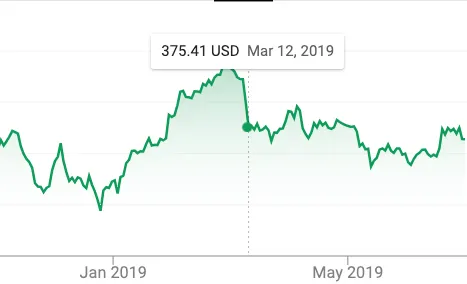How Cloud Computing Transformed Leading Industries
(Today’s article comes to us via Artur Meyster from careerkarma.co .)
Cloud computing has been around for over a decade, taking over many aspects of technology. We use the cloud every day in our smartphones and laptops without realizing how our experience will be much worse without it. Here is how cloud computing has transformed leading industries.
What is Cloud Computing?
You’ve probably heard about the cloud many times and have an idea of what it means, but, when asked “What is cloud computing?” you don’t have a straightforward answer. Cloud computing, simply put, is the delivery of technology power through the Internet.
We use cloud computing services if we own a smartphone or a computer. When you back up the data from your devices to the cloud, you are using their power to store your data.
Cloud computing services deliver more computing power, storage, software, platforms, and more. Amazon first offered this technology in 2006 and has grown with other companies like Google and Microsoft, adding their developments.
However, the word “cloud” may be a little deceiving. It makes you think of something that happens in the air or by magic. But in reality, companies that offer cloud computing services have tech infrastructure and data centers in different locations around the world where all this magic occurs. You can enjoy this power by connecting through the Internet.
Scalability
One of the main things that have changed for businesses thanks to cloud computing is scalability. Before the cloud, each company had to have its own infrastructure and system. This required a lot of hardware, servers, and computer system engineers and architects to build the software.
If, after making the investment, the company wanted to scale down because their operations weren’t going so good, they couldn’t; they would just have more power than what they needed. And if they needed to scale up because of high demand, the company had to spend more money and it took time to meet the demand.
All these issues are solved with cloud computing. Companies can hire these services on a pay-as-you-go basis. If they need to scale up or down, they can do so in a matter of minutes worldwide. Cloud computing adapts to each business’s needs—if they need more or less, it is as quick as a click on the platform.
The hospitality industry, for example, can benefit a lot from cloud computing’s scalability. Hotels, airlines, tourism agencies, and any other businesses related to travel and vacationing have seasons of very high demand. But then they also have months of very low demand or no customers at all. They can use cloud computing to only pay for what they need when they need it.
Disaster Recovery
Automated disaster recovery is another thing that cloud computing has made possible. In today’s world, data has become a powerful asset and even a currency of sort. Losing it could mean the end of your business because it will disrupt your operations and reputation.
Disaster recovery is the plan every company should have in case something happens and they lose their data. Before, companies used to create disaster recovery sites, which basically were a second location that had a backup of the company’s data. However, these backup sites had as many expenses and maintenance needs as the primary data center.
Plus, when disaster did happen, companies had to make the recovery manually, which can take a lot of time. Instead, with cloud computing, you can store your data on the cloud, and the recovery if you need it is done automatically.
Avoid Infrastructure Costs
As mentioned briefly above, having your own computer systems requires heavy tech infrastructure and qualified professionals to make it work. It requires the initial costs of investing in servers, computers, network components, and so on, and hiring people that actually know how to build and deploy the software and systems.
And that’s without getting to maintenance costs, energy consumption, and the costs of putting this infrastructure somewhere. Plus, the prices of having a second site if you want to have a disaster recovery plan. If you compare all these costs with the cost of hiring cloud computing services, then the cloud is much cheaper.
Also, when scaling down, you won’t have the problem of having more infrastructure than what you need, incurring unnecessary expenses. The best part is that you won’t have to worry about anything because the cloud provider will manage them for you. And you just have to contact them if you have any issues.

Ecosystems Connectivity
Before the cloud, ecosystem connectivity was an issue, especially in companies with locations in different parts of the world. Each office had its own systems and networks, and communicating between them was hard. The same used to happen with a customer that wanted to have easy access to information and products.
With cloud computing, companies can have their systems centralized in one place, and then employers, vendors, or customers can have access to it correspondingly. Collaborating was never as effortless as it is now with cloud computing. Plus, with more people working from home than ever before because of the Covid-19 pandemic, cloud services have become a godsend.
Cloud Services
Cloud computing can deliver different IT services, depending on each business’s needs. The leading providers for these services are Amazon Web Services (AWS)—with 37 percent of the market— Microsoft Azure, and Google Cloud Platform. These services are:
- Infrastructure as a service or IaaS for technology infrastructures like servers and storage.
- Software as a service or SaaS for accessing software that runs on the cloud.
- Platform as a service or PaaS for developing, deploying, and maintaining applications on the cloud.
- Business process as a service or BPaaS for accessing software and platforms to grow and optimize a business’s operations.
In Summary
Cloud computing is a development that has been around for many years and has improved how leading industries operate. Businesses can now scale their IT needs without a problem, have cheaper disaster recovery, reduce overall operation costs, and enhance ecosystem connectivity. We will have to see what the near future brings for this technology.



